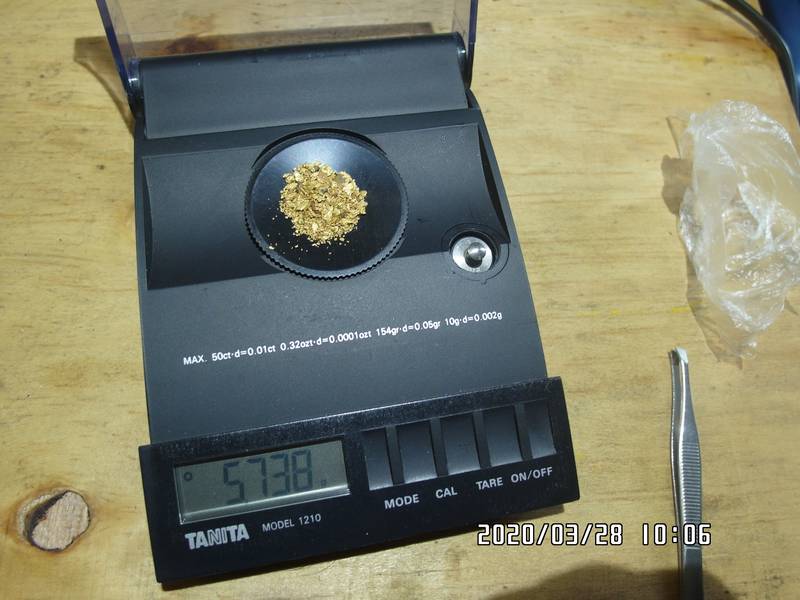2020-03-28, 5.738 grams of natural gold nuggets on the balance scale
On March 28th, 2020, we found and weighed approximately 5.738 grams of natural gold nuggets using our precision balance scale.
Gold can be discovered in two primary forms: as alluvial (placer) deposits or within the original host rock known as a mother lode. Recognizing the difference between these types is crucial for prospectors and miners alike:
Alluvial gold, often found in streams, rivers, or ancient riverbeds, has been eroded from its source by natural forces such as water flow over time. These nuggets are typically rounded due to this erosion process and can vary greatly in size—from tiny flakes (flour gold) to larger pieces weighing several ounces. They often accumulate with other heavy minerals like black sands, which consist of magnetite or hematite.
In contrast, a mother lode refers to the original vein or deposit where gold was initially formed within solid rock formations such as quartz veins in hardrock mining areas. Gold from these sources is usually more angular and irregularly shaped since it has not undergone significant erosion like alluvial deposits have experienced over time; instead of being rounded by water action, they retain their crystalline structure until exposed through geological processes or human intervention via excavation methods.
